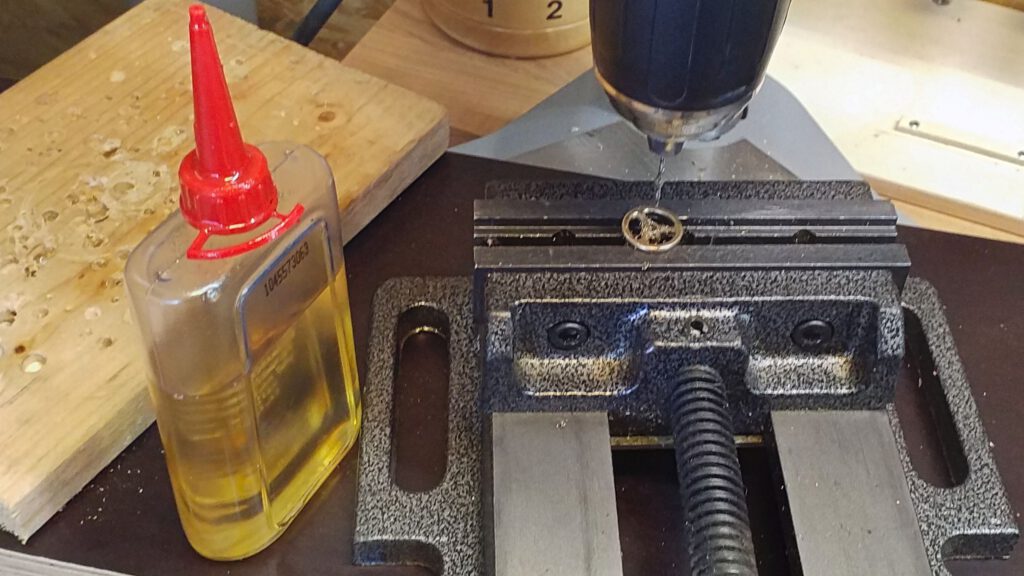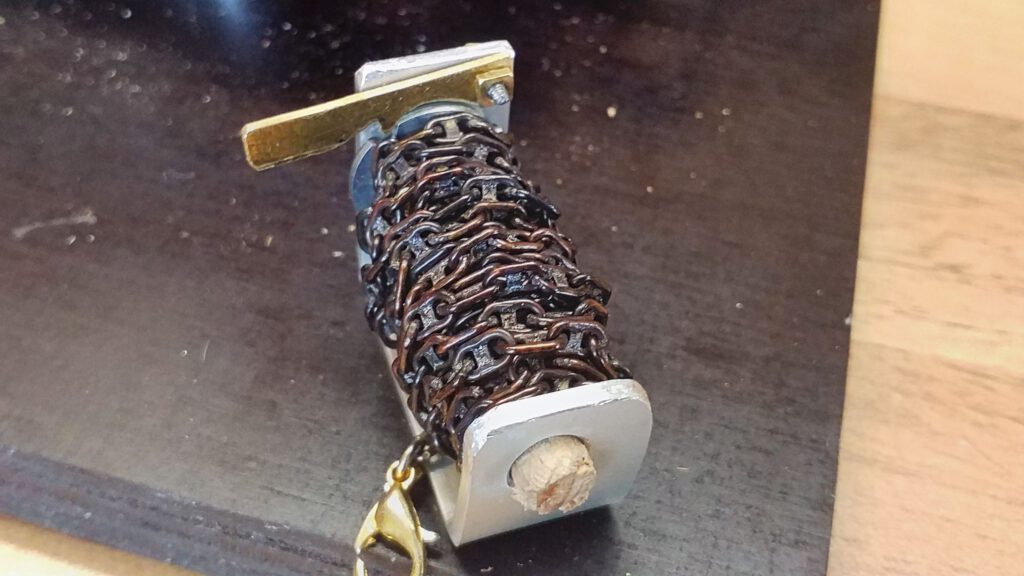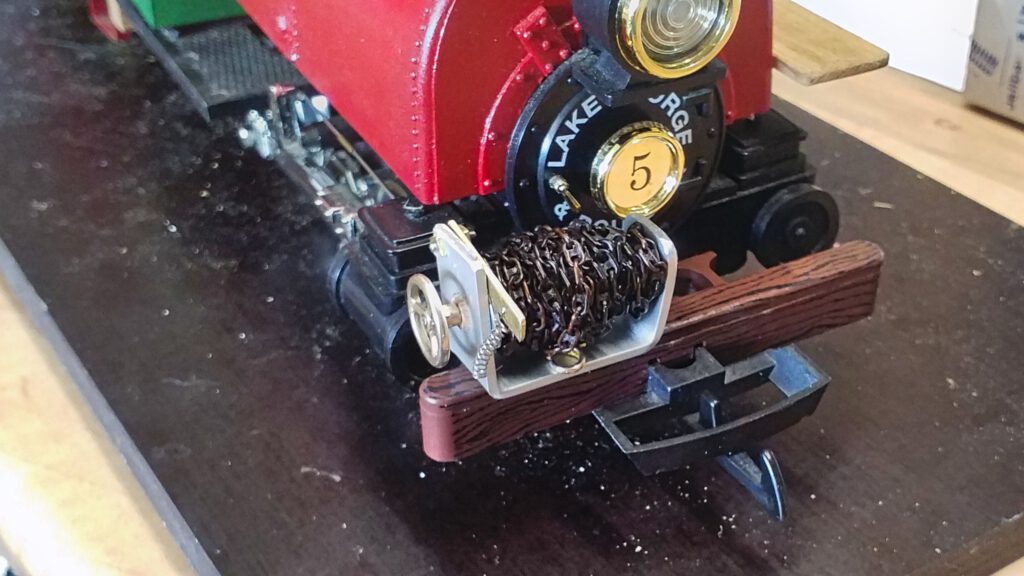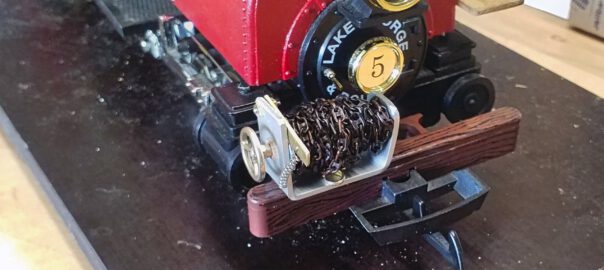Besides other insights, the Summer Operation Session 2020 revealed that my Porter needs a better stowing place for the shunting chain.
On the one hand the chain easily drops from the loco if it isn’t properly secured, on the other hand it’s quite fidgety to fixate the chain at a given lenght. So I more or less spontaneously got the idea to tinker on a chain winch.
The first steps happend on a whin and I was sure that they wouldn’t succeed, that’s why I didn’t take any pictures. But after I realized I was onto something, I made some after the fact.
First I tested whether or not I could file a washer into a gear. That’s surprisingly easy, even if I only filed down four indentations. The next question: Can I file down an off-the-shelf 6 mm wooden peg into a winch? You guessed right: I can.
So, more or less to humor myself, I bend a piece of aluminium into a U-shape in which I barely manage to wedge the peg. Now it’s clear that this little tinkering is going to see action on the loco until I have the time to build a “proper” winch.
On to the drawer with the bits and pieces and fittings. Surely, I’ve got a nice handwheel, which is drilled in order to receive a threaded rod.

The next picture shows the assembled winch: A u-shaped piece of aluminium hold the filed-down peg. The gear is glued to the far side of the peg.
The U’s longer end supports a short threaded rod onto which the pawl is fastened. I filed that into shape from brass.
At the far side the handwheel is screwed into the peg

Since gear and pawl don’t align properly, the winch doesn’t block its movement automatically. That’s why I added a small tension spring which pulls the pawl down. The sprung pawl blocks the winch in bothe direction, but that’s no big deal. While lifting the pawl with a thumb, one can easily and quickly wind or unwind the chain with the handwheel’s help.
The winch itself is fastened to the buffer bar with two screws. The fixation is sturdy enough to pull laden wagons on gradients. One can also see that I temporarily added an LGB loop and hook coupler, however that will vanish as soon as all my rolling stock is fitted with knuckle couplers. Actually, only one side of Bulkhead #100 is missing.

All in all this little project has beengreat fun and at the same time it improves an important function of the loco. I especially like how I made progress and experienced success with very little effort which helps me to see bigger projects through.
I can only recommend to do some tinkering every now and then, ideally adding to the operation. Of course this is no scale model, but that’s the point: a quick, cheap proof of concept which demonstrates to me: It’s worthwhile to build a proper chain winch.

